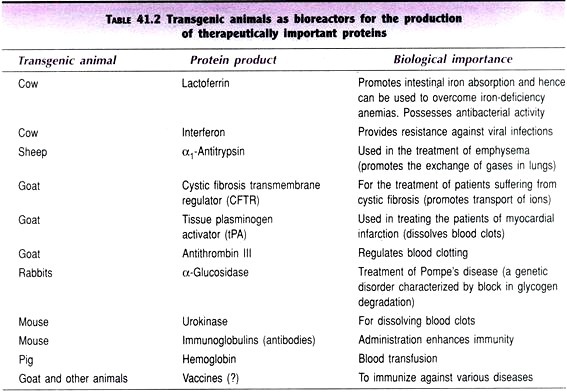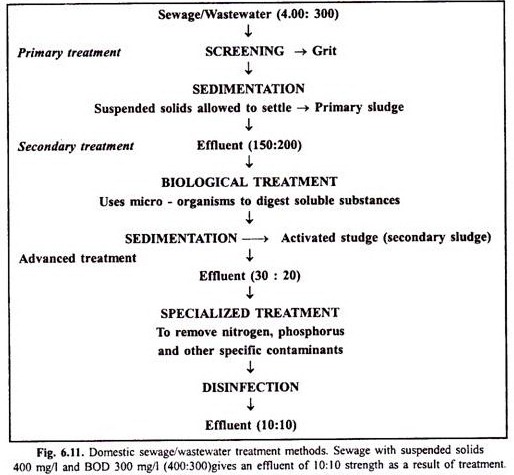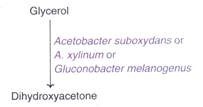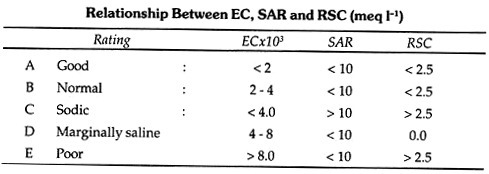ADVERTISEMENTS:
Read this essay to learn about Irrigation. After reading this essay you will learn about: 1. Meaning and Purpose of Irrigation 2. Advantages of Irrigation 3. Adverse Effects of Irrigation 4. Scheduling 5. Methods Used for Measuring 6. Methods 7. Irrigation Water Quality.
Contents:
- Essay on the Meaning and Purpose of Irrigation
- Essay on the Advantages of Irrigation
- Essay on the Adverse Effects of Irrigation
- Essay on the Scheduling Of Irrigation
- Essay on the Methods Used for Measuring Irrigation Water
- Essay on the Methods Used for Irrigation
- Essay on Irrigation Water Quality
Essay # 1. Meaning and Purpose of Irrigation:
Irrigation is the artificial application of water to land for growing crops or trees.
ADVERTISEMENTS:
Irrigation is the artificial application of water for the purpose of supplying moisture essential to plant growth. (Hansen et al, 1980)
Purpose of Irrigation
1. To add water to the soil for supplying the moisture essential for the plant growth
2. To provide crop insurance against short duration drought
3. To cool the soil atmosphere, thereby making more favourable environment for plant growth
ADVERTISEMENTS:
4. To washout or dilute salts in the soil
5. To reduce the hazards of soil piping
6. To soften the tillage pans
Essay # 2.
Advantages of Irrigation:
1. Irrigation plays a key role in increasing food production to feed the expanding population
2. Irrigation can ensure a stable production in traditional dry land farming systems, subjected to frequent vagaries of rainfall
3. Irrigation can prolong the effective growing period in areas with dry seasons, plant permitting multiple cropping and employment generation
4. With the security of cropping under irrigation, additional inputs (tillage, fertilizers, plant protection etc.) become economically feasible
5. Irrigation reduced the risk of expensive inputs being wasted by drought
Essay # 3.
Adverse Effects of Irrigation:
ADVERTISEMENTS:
1. Irrigation without appropriate drainage leads to land degradation (waterlogging and soil salinisation) leading to reduce crop productivity
2. Ground water pollution, especially with nitrates, due to seepage of water carrying nitrate from applied fertiliser to the ground water
3. Irrigation may lead to colder and damper climate conductive to outbreak of pests and diseases.
ADVERTISEMENTS:
a. Infiltration (movement of water into soil)
First entry of water from the upper layer of soil generally occurs in unsaturated soil.
b. Percolation:
Vertical movement of water or downward movement of water from different soil layer generally occurs in water saturated soil.
ADVERTISEMENTS:
c. Seepage:
Horizontal flow of water in irrigation channels or through canals.
d. Leaching:
Downward movement of nutrients and salts from the root zone with the water.
ADVERTISEMENTS:
e. Runoff:
The flow of excess water from the field after saturation of soil.
f. Life saving irrigation:
It is also known as contingency irrigation
1. Supplemental irrigation applied to dry land crops
2. The land is not prepared for irrigation
ADVERTISEMENTS:
3. Irrigation water is applied to the fields by dividing them into plots of 20-25 m width with a small bund to guide the water
Disadvantage: Uneven distribution of water required more labour
g. Pudding:
Irrigation before sowing of crops to reduce percolation of water.
h. Kor watering:
Crop water requirement neither is nor uniform all through base period. The first watering is known as Kor watering.
ADVERTISEMENTS:
i. Duty of water:
Volume or quantity of water required for irrigation to bring a crop to maturity
j. Base period:
The period (days) during which irrigation water is supplied to the crop.
k. Delta:
Delta is the total depth of water (cm) required by a crop during its duration in the field.
l. Rostering/Water regulation:
The process of distribution of irrigation water.
m. Palco:
Palco is the first irrigation before sowing the crop for seed germination and seedling establishment.
n. Irrigation requirement:
I.R. = (WR)-(ER + GW)
Where, WR = Water requirement, ER = Effective rainfall, GW = Ground water
o. Irrigation Efficiency:
“The percentage of applied irrigation water stored in the soil and made available for consumptive use by the crop”.
p. Irrigation period:
Water Resources in India:
1. Average annual rainfall (1250 mm over 329 mha) over the country is about 400 mha. m.
2. Out of the 400 m. ha. meter of rainfall – 75 per cent is received by S-W monsoon period (June-Sept) and rest 25 per cent in remaining 8 months.
3. Water availability per capita is 2300m3/year.
4. Annual water resources in the various river basins is estimated to be about 187 mha.m. and the rechargeable ground water resources is 43.2 mha.m. It means the total water availability in the country is about 230 mha.m.
5. Irrigation Projects:
a. Major Irrigation Projects – Projects covering >10,000 ha of catchment command area
b. Medium Irrigation Projects – 2,000 -10,000 ha of catchment command area
c. Major Irrigation Projects – Less than 2,000 ha of catchment command area
Essay 4.
Scheduling Of Irrigation:
“Irrigation scheduling is the process of determining when to irrigate and how much water to apply”.
Why Need of Irrigation Scheduling:
1. For maximize water use efficiency
2. To maximize yield
3. To increase cropping intensity
4. Improve and quality produce
5. To maintain soil and environmental balance
Purpose of Irrigation Scheduling:
“To maximize ii ligation efficiency by applying the exact amount of water needed to replenish the soil moisture to the desired level.”
Effect of Poor Scheduling of Irrigation:
1. Non efficient use of irrigation water and production inputs i.e. fertilizers
2. Lower crop yield
3. Decrease in production per unit of water
Scheduling of Irrigation Is Based on:
(A) When to irrigate
(b) How much to irrigate
(A) When to Irrigate:
1. More nutrient availability and most crops taken up water when soil moisture is near field capacity
2. Maximum production when irrigation is given at 50 per cent soil moisture content in root zone of the crop
3. Determination of soil moisture content by:
(a) Gypsum block
(b) Tensiometer
(c) Gravimetric method
(B) How much to Irrigate:
It is the net quantity of water to be applied
The quantity of water given for irrigation is depending upon the amount of available moisture in the soil.
Approaches of Irrigation Scheduling:
(i) Soil moisture depletion approaches
(ii) Climatological approaches
(iii) Plant approaches
(i) Soil Moisture Depletion Approaches:
(a) The available soil moisture is between field capacity (-1 /3 bar) to wilting point (-1/15 bar).
(b) For crops like maize, wheat, rice-25 per cent depletion of available soil moisture is adequate.
(c) For drought resistant crop like sorghum, bajra, cotton – 50 per cent depletion of available soil moisture is adequate.
(d) Irrigation water applied at a predetermined soil moisture tension at a specific depth by tensiometer at 0.85 bars.
(e) Soil moisture content is estimated by farmers by feel and appearance of soil condition.
(ii) Climatological Approaches:
(a) It is also termed as Book Keeping Method.
(b) It is related to the rate of consumptive use by crops and rate of evaporation.
(c) Different methods used are IW/CPE ratio method, USWB – Class A pan evaporimeter measurement method.
A fixed amount of irrigation water (IW) is applied when cumulative pan evaporation (CPE) reaches a predetermined level. The amount of water given at each irrigation ranges from 4-6 cm (5 is most common).
(d) Irrigation scheduled at IW/CPE ratio of 1.0 with 5 cm of IW means 5 cm of irrigation water is applied when cumulative pan evaporation reaches 5 cm.
This technique is simple, rapid and reliable and has high extension value.
(iii) Plant Approaches:
Any plant character relative directly or indirectly to plant water deficit which respond readily to influence soil water, plant and evaporation demand of atmosphere may serve as a criteria for timing of irrigation to plant.
(a) Indicator plant – The plant under moisture stress indicates the change in colour of leaf i.e. Cotton, beans, groundnut, alfalfa etc.
Sunflower show wilting symptoms.
(b) Relative water content
(c) Leaf water potential
(d) Plant temperature
(e) Water diffusion resistant
(f) Computer modelling
(g) Cell elongation rate
But these methods require extensive research, expensive equipment’s and standardization.
Essay # 5. Methods Used for Measuring Irrigation Water:
Several devices are commonly used for measuring irrigation water.
They grouped into four categories:
(i) Volumetric Methods
(ii) Velocity Area Methods
a. Float Methods
b. Water Meters
(iii) Measuring Structures/Devices
a. Orifices
b. Weirs
c. Flumes
(iv) Tracer Methods
(i) Volumetric Method (Using a Container):
A simple method of measuring a small irrigation stream is to collect the flow in container of known volume for a measured period. An ordinary bucket or barrel is used as container. The time required to fill the container is recorded with a stopwatch or with seconds on wristwatch. The rate of flow is measured as below:
Problem: A 24 liter capacity bucket is filled in 10 seconds by discharge from a Persian wheel. What is rate of flow?
Solution: Discharge ratio liter/second = 24/10 = 2.4 liter/second or 144 liter/ minute.
(ii) Velocity Area Method:
(a) Float Method:
To determine the velocity of water at the surface of the channel, the length of the trial section is divided by the average time taken by the float to cross it. Since the Velocity of the float on the surface of the water will be greater than the average velocity of the stream; it is constant factor, which is usually assumed to be 0.85.
To obtain the rate of flow, this average velocity (measured velocity x co-efficient) is multiplied by the average cross sectional area of the stream.
Q = A x V
Where,
Q: Discharge rate in m3/sec.,
V: Velocity of flow in m/s
A: Cross section al area of channel in m2
(b) Water Meters:
Water meters utilize a multi blade propeller made of metal, plastic or rubber, rotating in a vertical or horizontal plane and geared to a totalizer in such a way that a numerical counter can totalize the flow in any desired volumetric units, water meters are available for a range of sizes suiting the pipe size commonly used on the farm.
Basic requirements for accurate operation of the water meter are:
a. The pipe must flow full at all times.
b. The rate of flow must exceed the minimum for the rated range.
Meters are calibrated in the factory and field adjustments are usually not required. When water meters are installed in open channels, the flow must be brought through the pipes of known cross sectional area. Care must be taken that no debris or other foreign materials obstruct the propeller.
(iii) Water Measuring Devices:
(a) Orifices:
Orifices in open channel are usually circular or rectangular openings in vertical bulk head through which water flows. The edges of opening are sharp and often constructed of metal. The cross sectional area of orifice is small in relation to the stream cross section. Orifice may operate under free flow or submerged flow condition.
The types of orifices are:
(b) Discharge through Weirs:
Weir means a notch in a well built across a stream which is used to measure the flow in a irrigation channel, or the discharge of a well or canal outlet at a source.
The notch may be:
(a) Rectangular
(b) Trapezoidal and
(c) 90 degree V (Triangular) notch or weir.
Weirs measures the flow in an irrigation channel or discharge of a well or channel outlet.
1. Common weir type for water measurement in canal – Broad crested weir, Parshall flume Cut throat weir
2. Volumetric method of water measurement – Furrows, Sprinklers and Drippers
3. If water flows from the pipe – Venturi meter
4. Measuring uniform flow of water – Rectangular and Trapezoidal weir
5. For highly variable water flow and desired greater – Triangular and Parabolic weir accuracy
(i) 90° V notch weirs measure small and medium size streams.
(c) Parshall Flume or (Venturi flume):
Parshall flume is a device in which the discharge is obtained by measuring the loss in the head caused by forcing a stream of water through a throat or converged section of a flume with a depressed bottom. The loss in head is very small in this device.
The accuracy of measurement in the Parshall flume is within allowable limits of 5 per cent the flumes ranging from 3 inches to 10 feet throat width are used, which gives the range of discharge of 1 /30 to 200 cusecs. The flumes of 3,6 and 9 inch size are generally used in field measurement.
Parshall/Venturi flume is the most common water flow measuring device which measures water flow in open conduit.
Cut-throat flumes:
Cut-throat flumes are developed for measurement of water. Since there is no throat section (Zero throat flumes), the flumes have been given the name as out throat flumes by the designers.
(iv) Tracer Method:
These methods are independent of stream cross section and are suitable for field measurements without installing fixed structures. In these methods, a substance (tracer) is concentration form is introduced into flowing water and allowed to thoroughly mix. The concentration of the tracer is measured at downstream section.
Since only the quantity of water is necessary to accomplish the dilution is involved, there is no need to measure velocity, depth, and head, cross sectional or any other hydraulic factor usually considered in discharge measurement.
The relationship between size of stream, time of application, area to be irrigated and depth of water to be applied is as below:
Qt = ad
Where,
Q. Size of stream or discharge (liter/second) or (ha. cm per hour)
T: The time of application of water (seconds or hour)
A: Area (sq.m or hectare)
D: Depth in cm that the volume of water used would cover the land irrigated, if quickly spread uniformly over its surface.
Essay # 6. Methods Used for Irrigation:
Surface Irrigation Methods:
(a) Flooding
(b) Check basin
(c) Ring basin
(d) Border strip
(e) Furrow method
(f) Surge method
(a) Flooding:
1. Used for lowland rice and other crops.
2. Water is allowed from the channel into the field without much control on either sides of the flow.
3. It covers the entire field and move almost unguided.
4. The height of bunds around the field should be 15 cm for effective use of rainfall.
5. It is a minimum labour intensive method.
Advantage:
1. Less labour required
2. No extra care
3. Large stream can be easily managed.
Disadvantage:
1. Uneven distribution of water,
2. Low water application efficiency.
(b) Check Basin:
1. Most common method of surface irrigation.
2. The field is divided into small plots surrounding by small bunds on all four sides.
3. Water from head channel is supplied to the field channel one after another.
4. Each field channel supplied water to 2 row of check basin and water is applied to one basin after another.
5. The size of check basin ranges from 4m x 3m to 6m x 5m depending upon stream size and soil texture.
Advantages:
1. Uniformly water application,
2. Suitable for those fields which are quite large and not easy to level the entire field.
Disadvantage:
1. More labour required for field layout and irrigation
2. Wastage of field/land is more under irrigations and bunds. Mostly 5 per cent of land is waste for bunding
(c) Ring Basin Method:
1. Basins around the trees are made.
2. It is suitable for fruit trees.
3. It enhances the water use efficiency and fewer losses.
4. Basins are generally round in shape and occasionally square shaped.
5. Basins are small when the fields are young and the size is increased with age of trees.
6. Basins are connected by channel irrigation.
(d) Border Strip Method:
1. Field divided into number of strips by bunds of around 15 cm height.
2. These parallel earth ridges (called border) are formed to guide the flow of the water across the field.
3. Length of strip ranges from 30m – 50m, while width is from 3m – 5m
4. The slope ranges from 0.1-1 per cent.
5. Water from the channel is allowed into each strip at a time
6. This method is suitable for close growing crops and medium to heavy texture soils, but not suitable for sandy soils.
Advantages:
1. Large irrigation streams can be efficiently used,
2. This method gives highest water use efficiency than other surface irrigation methods.
Disadvantages:
1. No uniform distribution of water.
2. This method can not apply for sandy soil.
(e) Furrow Method:
1. Furrows are formed along or across the slope and water from pipes is diverted into the furrows.
2. Water infiltrate from the bottom and sides of the furrow moving downward and laterally to wet the soil.
3. Water is allowed into 3-5 furrows at a time from open ditches and or pipes.
4. This method is adapted to crops grown with ridges and furrows.
5. This method is suitable for crops i.e. Sorghum, cotton, maize, tobacco, potato, sugarcane etc.
(f) Surge Method:
1. Intermittent application of water to the field surface under gravity flow which results in a series of “on and off” modes of constant or variable time spans.
Advantages:
1. Infiltration uniformity is increased,
2. Deep percolation is reduced compared to continuous water application due to intermittent wetting and dewatering process.
Sub Surface Irrigation Method:
1. Through underground perforated pipes or through deep trenches at 15-30 m. intervals water gradually wet root zone through capillary movement.
Advantages:
1. Evaporation loss is less due to dry surface
2. Less weed management
3. Deep trenches should be made for drainage.
Disadvantages:
1. Deep percolation through trenches.
2. Maintenance of pipe lines is difficult
3. High initial cost
Micro Irrigation Methods:
(a) Sprinkler irrigation
(b) Drip Irrigation
(a) Sprinkler Irrigation:
Water is applied as spray or as rain over the crop.
Rate of water delivery is > 1000 litre/hrs.
3. It operates at the pressure of > 2.5 bar and through water as a spray up to the distance of > 10 m.
Advantages:
1. Uniform distribution of water.
2. Saving of water from 25-50 per cent.
3. Saving of land 10-20 per cent.
4. Irrigation area is increased by 1-2 times with the same amount of the water.
5. No risk of runoff and erosion.
6. Suitable for undulating land and steep sloppy.
7. Suitable for areas where water and labour scarcity.
8. Suitable for saline soils to leach salts.
Disadvantages:
1. Not followed under high wing velocity (>12 km/hour).
2. High initial costs.
3. High energy is required (0.50 to >10 kg/cm2).
4. More spreading of diseases.
5. Cannot be used for rice and jute crops.
(b) Drip Irrigation: Discovered in Israel:
1. It is also known as trickle irrigation.
2. Discharge rate of water per dripper is 1-4 litre/hrs.
3. It consists of main line, sub pipe line, laterals and emitters.
4. The discharge is from emitters.
5. The irrigation interval is 1-4 days.
6. It saves 50-70 per cent water.
Advantages:
1. Well suited for areas of acute water shortage.
2. Minimization of soil erosion and deep percolation and runoff losses.
3. Water is maintained at field capacity.
4. Salt concentration is less.
5. No land leveling is necessary.
6. Herbigation and Fertigation can also be applied.
7. Less disease and weed infestation.
Disadvantages:
1. Clogging of emitter.
2. Damage to lateral systems due to rodents and other animals.
3. Salt accumulation near plants due to lack of sufficient moisture for leaching.
4. High initial cost.
5. Most suitable for wider spaced orchard crops and sugarcane.
6. Inadequate root development.
Essay # 7. Irrigation Water Quality:
1. Water, either from precipitation or ground, never remains pure as the movement it is converted into liquid form from vapour it gets mixed with atmospheric gases and after reaching on the earth it is mixed with various salts, minerals and even heavy metals.
2. The prime contaminations of irrigation water are irons like sodium, calcium, magnesium and potassium while anions are like carbonate bicarbonate, chloride, sulphate and nitrate.
3. The quality of irrigation water is mostly expressed on the basis of total salt concentration in water, relative Na concentration to other cations, bicarbonate content and boron concentration.










